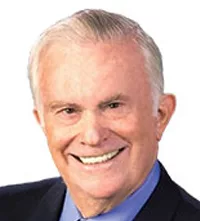As 2021 was barely on its feet, the U.S. economy began to take on a rapidly new look as, under President Joseph Biden's direction, 80 percent of American’s vaunted energy base will be eliminated.
It started with executive decrees that practically reversed former President Donald Trump’s solid start of re-making America a major manufacturing giant. It would almost seem that President Biden wanted to eradicate every important economic approach of his predecessor and return to the Obama administration, which encouraged sending U.S. production overseas as it drastically lowered costs.
Instead, the new president has become the father of the “retail revolutions,” which makes the end-use cheaper for America’s multi-millions of shoppers. In doing so, the Biden administration is making China more important than ever as U.S. companies, dependent on the world’s manufacturers, will no longer need to worry about losing their lowest costs.
This so-called retail revolution caters to America’s near 350 million residents, especially as the borders in America’s broadest South will now become open. This will supposedly please the shopper who can anticipate the lowest prices.
While President Biden is counting on the vast majority supporting his retail revolution, it’s obvious that China will now become the center of economic world power. This was a position held by the United States, which was alone in its rebuilding of the post-World War II world. One can only hope that America’s greatness will resurrect itself, as it always has in the past of leading the world.
Paying Off U.S. Debt
Since time immemorial, incoming presidents were confronted with a mountainous U.S. debt piled on their desks, a major problem with which to contend.
It started in World War II and after the 10-year (1929-39) Depression, when President Franklin D. Roosevelt wisely opened up the federal government’s bank vault to end that dark period and win World War II. As the United States supported the United Kingdom and Russia in fending off Hitler’s Wehrmacht, the ordering of national taxation was displaced with a major new U.S. monetary debt to solve first the Depression, and then support with “war material” for the allies fighting Hitler.
This became even more amplified as women joined men in the factories producing critical war weapons once the United States was fighting both Germany and Japan.
After World War II ended successfully, the United States took it upon itself to help rebuild the unquestionable destruction the war had wrought. To stop the red tide of victimizer Communism from sweeping over Europe, Germany and Italy were included in some of these rehabilitations.
But such extraordinary spending has never stopped, even as the first trillion-dollar debt introduced a new definition into the Washington vocabulary.
While the increasing debt has become each new president’s “load,” the ability to pay the debt’s low interest, and keeping the impossible eradication of the base, seems not to be a major issue. It’ll always be there, as each new president no longer focuses on even attempting to lower the multi-trillion monetary dollar national debt.
Retailers Join Vaccine War on Coronavirus
Some of America’s largest retailers are proposing to take a critical role in administering COVID-19 vaccine shots to avoid log jams and confusion that slowed the capability of success in the early days.
Indications are that the United States fell far short of its initial goal of inoculating 20 million people by the end of 2020. Health departments, hospital systems and long-term care facilities were beset by bottlenecks, vaccine hesitation and confusion in schedules, as initial and supplemental shots had to be given.
Not everyone is eligible for the vaccines, and approved shots remain in short supply. But vaccines are more broadly available in some states, and the Centers for Disease Control and Prevention aims to make them more readily available in local pharmacies
The job of vaccinating huge members of the population will fall largely on retail pharmacies. Companies such as CVS Health Corp, Walgreens, Boots Alliance, Walmart and Kroger anticipate giving tens of millions of shots per month.
Hospitals and health systems are already overwhelmed by treating coronavirus-infected patients, but pharmacies especially adaptable in resolving the COVID-19 vaccination efforts. Pharmacy executives are partially making themselves available as pharmacies are already a place where most patients come to when they need medicinal products and even advice about what doctors or instructions are available to solve their worst maladies.
Furthermore, pharmacy personnel tend to be the most experienced in resolving questions relating to the current pandemic disaster.
CVS and Walgreens combined have 19,000 U.S. stores, while Walmart, Rite Aid and Public Super Markets together have another 11,000 locations. President Biden said his target of administering shots is 100 million during his first 100 days in office: he claims this could rise to 50 million more.
Among the biggest challenges for retailers is dealing with customers eager to know when the basic and follow-up shots will be available. With no previous experience in such a disastrous infection so comprehensively universal throughout all 50 states, the complications of this disaster are legion. Only with America’s problem-solving history can one hope that all eventually will be well once the current year finally ends on Dec. 31.






